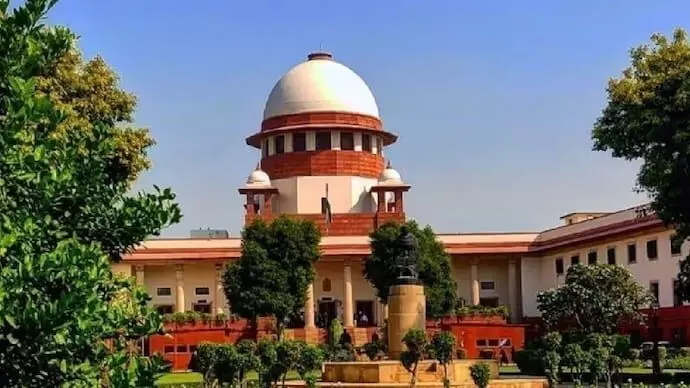Supreme Court's Landmark Verdict on Private Property Rights: Government Cannot Acquire All Private Properties as Community Resources

The Supreme Court has made a major decision in the private property dispute. While giving the verdict in this case, CJI DY Chandrachud said that not all private property is the ‘material resources of the community’. Some private property can be the material resources of the community. This is the decision of the 9-judge Constitution Bench, which has overturned many decisions of the Supreme Court from 1978 till now. A 9-judge bench headed by Chief Justice DY Chandrachud in the Supreme Court has given its verdict on this decades-old dispute. The nine-judge Constitution Bench headed by Chief Justice of India DY Chandrachud had reserved its decision in the private property case after hearing on May 1 this year. While giving the verdict in the case, CJI DY Chandrachud said, 'There are three judgments, mine and 6 judges'... Justice Nagaratna's partial agreement and Justice Dhulia's disagreement. We believe that Article 31C remains intact to the extent that it was upheld in the Kesavananda Bharati case. The Supreme Court has made it clear in its historic decision that the government cannot acquire all private properties. CJI DY Chandrachud overturned the decisions after 1978, which adopted the socialist theme and said that the government could take over all private properties for the common good. The CJI, writing the majority decision of seven judges, said that all private properties are not physical resources and hence cannot be taken over by governments.
The majority decision of the Supreme Court
- The government cannot acquire all private properties.
- The CJI, while giving a majority verdict in the case of a bench of 9 judges, said - The majority rejected the previous decision of Justice Krishna Iyer, which said that all privately owned resources can be acquired by the state. It said that the old regime was inspired by a particular economic and socialist ideology.
- Supreme Court - By adopting a dynamic economic policy in the last 30 years, India has become the fastest-growing economy in the world. He does not agree with Justice Iyer's philosophy that every property, including the property of private individuals, can be called a community resource.
- The Supreme Court said that in the 1960s and 70s, there was a tendency towards a socialist economy, but since the 1990s, the focus has been on a market-oriented economy. The direction of India's economy is away from any particular type of economy, rather its aim is to face the emerging challenges of a developing country.
- The CJI said, not all private property is the material resource of the community. Some private property can be the material resource of the community. The decision of a 9-judge Constitution Bench. Many decisions of the Supreme Court from 1978 till now were overturned.
- The CJI said, 'The use of the words material and community is not a meaningless exaggeration.'
- CJI DY Chandrachud, while delivering the verdict, said, 'There is no need to refer to broad legislative interpretation. It is clear from the text of the Constitution that the intention of the Parliament to include Section 4 of the 42nd Amendment was to include the power of the legislature. Looking at the clear intention of the Parliament, it can be seen that there was no intention to repeal this word. The unamendment of Article 31C was revived.
Can private property be considered a community resource? A 9-judge Constitution Bench of the Supreme Court is giving its verdict on this question. A Constitution Bench of Chief Justice Justice DY Chandrachud, Justice Hrishikesh Roy, Justice BV Nagarathna, Justice Sudhanshu Dhulia, Justice JB Pardiwala, Justice Manoj Mishra, Justice Rajesh Bindal, Justice Satish Chandra Sharma and Justice Augustine George Masih is giving the verdict.
The Supreme Court will give its verdict on a total of 16 petitions in the private property case today. The main petition among these is from the Association of Property Owners of Mumbai. The amendment made in the law in Maharashtra in the year 1986 has been challenged, which includes the right to acquire private buildings and the right to acquire for repair and protection. The petitioner says that this amendment made in the law is discriminatory. It is an attempt to take over private property. On the other hand, the Maharashtra government says that this amendment is according to the Constitution.
Article 39(B) is the main root of the dispute in the matter of private property. 39(B) has been interpreted differently. Different benches have been confused in the interpretation. It is not clear what is a 'resource of the community' and what is not. 39(B) comes in the fourth part of the Constitution. This part of the Constitution is called DPSP. The government is not bound to implement the provisions of DPSP. However, the petitioners demand that the ownership and distribution of resources should be done in such a way that it benefits the common people.
